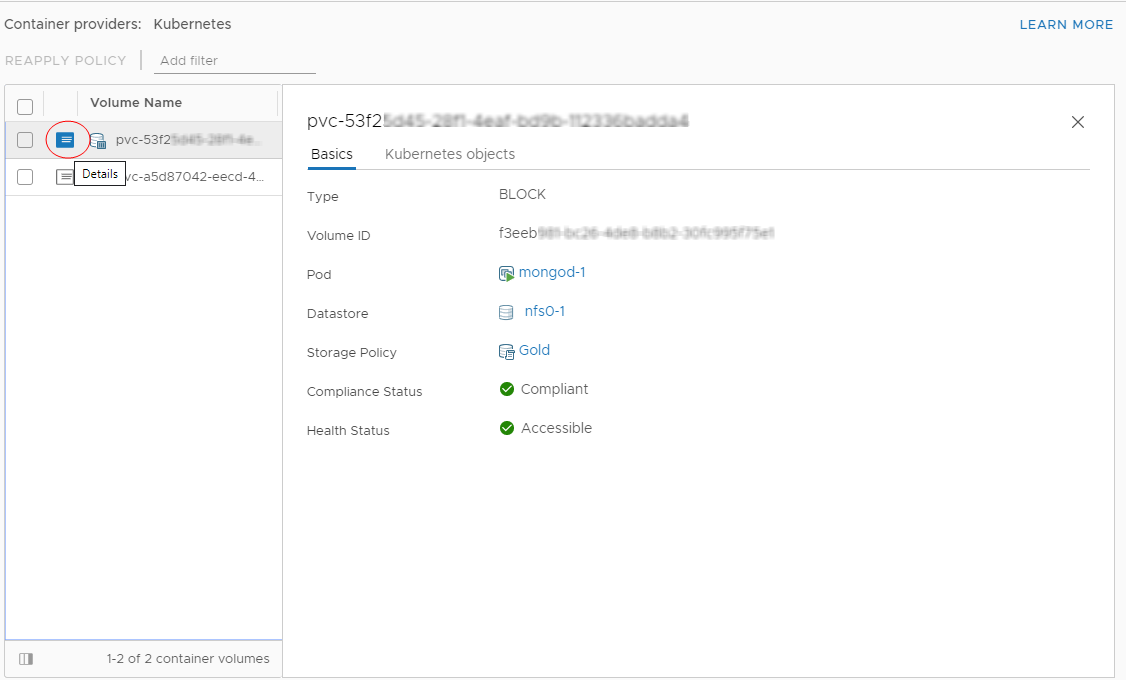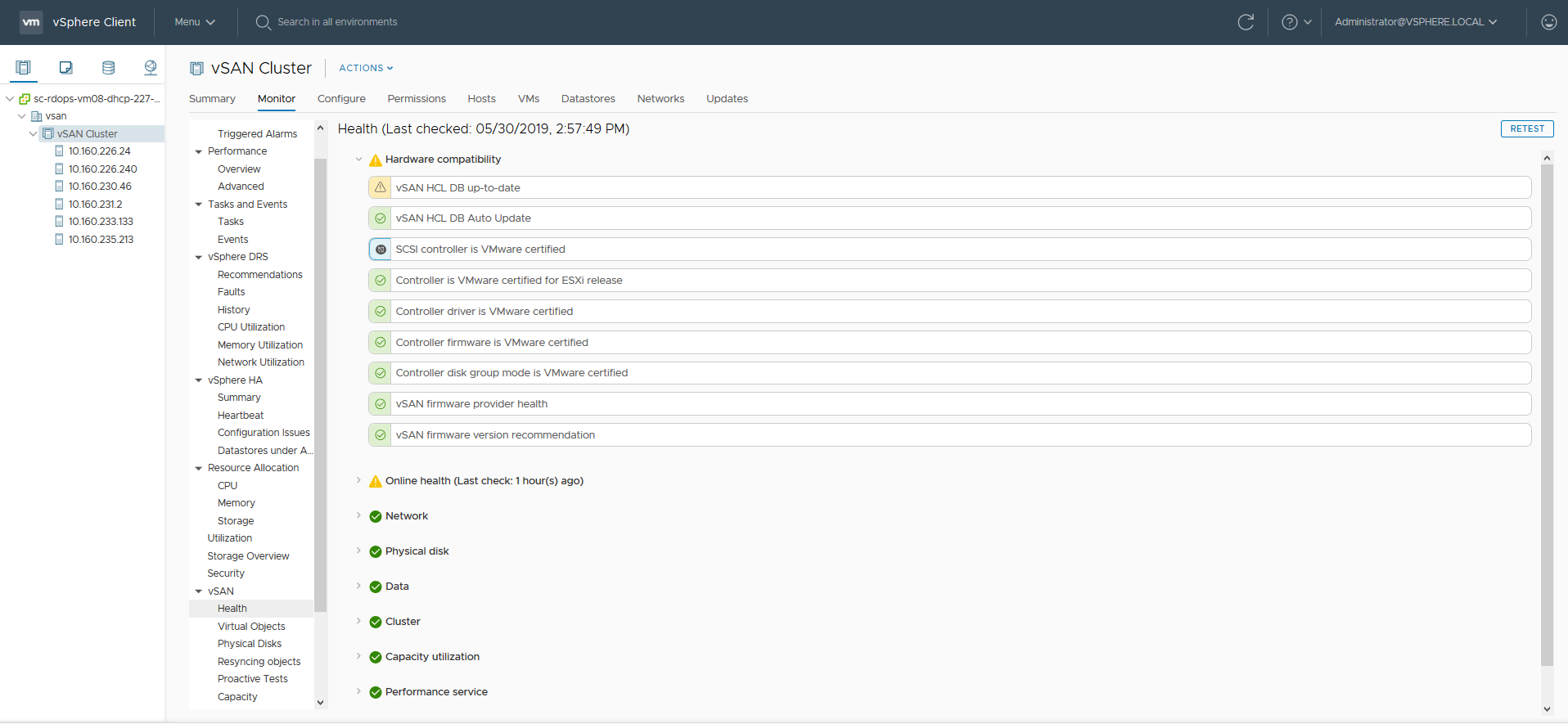
- #VSPHERE CHECK DISK HEALTH ON HOST TRIAL#
- #VSPHERE CHECK DISK HEALTH ON HOST PASSWORD#
- #VSPHERE CHECK DISK HEALTH ON HOST WINDOWS#
Notice that ESXCLI commands are case-sensitive, similarly to other console commands used in ESXi. Thus, ESXCLI consists of branches that are the main categories (namespaces) of ESXCLI commands. If you want to see the contents of the script, you can use the built-in text editor vi. You can locate ESXCLI and explore the nature of ESXCLI after executing the following commands:Īs you see in the console output, ESXCLI is a script written in Python that is located in the /sbin/ directory. The ESXCLI command is present right after ESXi installation along with other ESXi shell commands. Generally, ESXCLI is the command that has a wide list of subcommands called namespaces and their options. All ESXCLI commands must be run in the ESXi shell (console). In Windows, you can use PuTTY as an SSH client for running ESXI shell commands remotely.ĮSXCLI is a part of the ESXi shell, this is a CLI framework intended to manage a virtual infrastructure (ESXi components such as hardware, network, storage, etc.) and control ESXi itself on the low level.
#VSPHERE CHECK DISK HEALTH ON HOST PASSWORD#
You need to enter the login and password of the ESXi user in this case ( root can be used by default). In order to connect to the ESXi console remotely via SSH, in the Linux console, type a command like ssh 192.168.101.221, where 192.168.101.221 is the IP address of the ESXi server used in this example. You can also enable the ESXi shell in the Services menu.

After that, hit Start to launch the SSH server once, or hit Edit Startup Policy and select Start and Stop with host if you wish to enable the SSH server for an extended period of time. In VMware HTML5 vSphere Client, go to Hosts and Clusters, select your ESXi host, select the Configure tab, open System > Services and click SSH in the list of services. This method can be used if your ESXi host is managed by vCenter Server. Similarly, you can enable the console shell on a local ESXi host in the Services menu. Now you can connect to the ESXi console by using your SSH client remotely. Go to Host > Actions > Services and click Enable Secure Shell (SSH). Open a web browser and enter the IP address of your ESXi host in the address bar, then log in. The Enable SSH option allows you to open the ESXi console remotely by using an SSH client. If you need to go back to the ESXi DCUI, press Alt+F2. You should enter your login and password after that (credentials of the root user can be used). After enabling the ESXi shell, press Alt+F1 to open the console on the machine running ESXi. In the ESXi Direct Console User Interface (DCUI), go to Troubleshooting Options, navigate to Enable ESXi Shell and Enable SSH strings and press Enter to enable each option. There are three main methods for enabling the command line interface in ESXi. VMware has made this restriction for security reasons.
#VSPHERE CHECK DISK HEALTH ON HOST TRIAL#
Get the Free Trial now! How Do I Open the CLI in ESXi?īy default, ESXi shell is disabled for local and remote access hence, you are not able to run ESXi shell commands until you enable the ESXi shell.

Now you can perform VMware vSphere backup, set up custom disaster recovery workflows, backup Office 365 workloads and even test your Microsoft Hyper-V backups from one centralized web interface. Looking for a powerful yet simple and affordable data protection solution? NAKIVO Backup & Replication provides a rich set of high-end backup, replication and diverse recovery features for virtual, physical, cloud and SaaS environments. This blog post has been created in the format of a catalog which lists useful ESXCLI commands that are part of the ESXi shell commands. The most useful ESXCLI commands are explained in today’s blog post. In addition to traditional commands that are the same in Linux and ESXi, ESXi has its own ESXCLI commands. In this case, using the command line interface (CLI) is what you need – it is possible to configure all settings, including the hidden ones in the command line, which is also referred to as the console. The majority of settings are available in the graphical user interface (GUI), though sometimes you may need to get some information or change a configuration that is not displayed in the GUI. Thus, you can launch a web browser for managing vSphere with ESXi hosts and VMware Host Client for managing ESXi hosts in a web browser. Another option is to use VMware vSphere Web/HTML5 Client on any machine.
#VSPHERE CHECK DISK HEALTH ON HOST WINDOWS#
VMware provides a powerful and convenient graphical interface for managing ESXi servers – you can use a VMware vSphere Client that is a standalone application on Windows machines for managing ESXi hosts and the entire vSphere environment.

By Michael Bose Most Useful ESXCLI and ESXi Shell Commands for Your VMware Environment


 0 kommentar(er)
0 kommentar(er)
